Travel Tales from The Hub
Salar de Uyuni, Bolivia
More Photo Tips | Video Gallery | Photo Gallery | Enewsletter sign-up

By Ken Hubbard
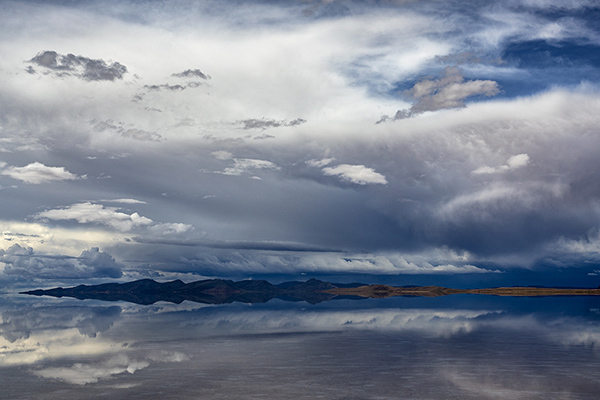
Tamron 28-75mm Di III RXD, 1/320 Sec, f/20, ISO 100 @ 50mm
Click image to view larger
People may know of Bolivia for different reasons, some good, some bad and some are just folklore. Bolivia boasts the most dangerous road in the world, their De Facto capital (Le Paz) is the highest in the world, women’s colorful Pollera Skirts and Bowler Hats and maybe they even know it as the place where Butch Cassidy and the Sundance Kid supposedly met their demise. There are so many amazing things about Bolivia that people may know and are drawn to, but the one that captures the imagination of photographers around the world is Salar de Uyuni, the largest salt flats in the world. Sitting in the Andes mountains at 12,000 ft in southwest Bolivia these salt flats cover an area of more than 4,000 square miles and contain about 10 billion tons of salt. Besides salt, these flats also contain about 25% of the worlds Lithium reserve, and there may be 50% of the reserve in all of Bolivia.
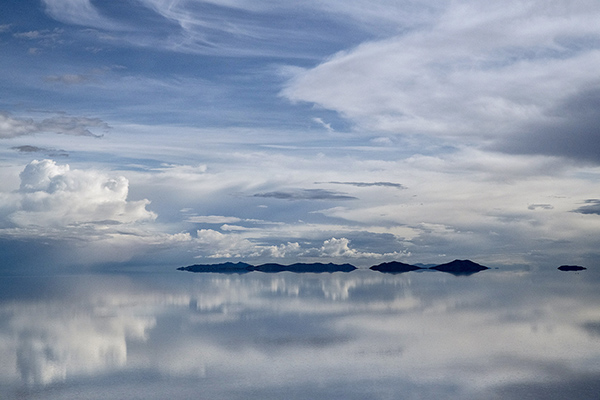
Tamron 28-75mm Di III RXD, 1/320 Sec, f/22, ISO 100 @ 70mm
Click image to view larger
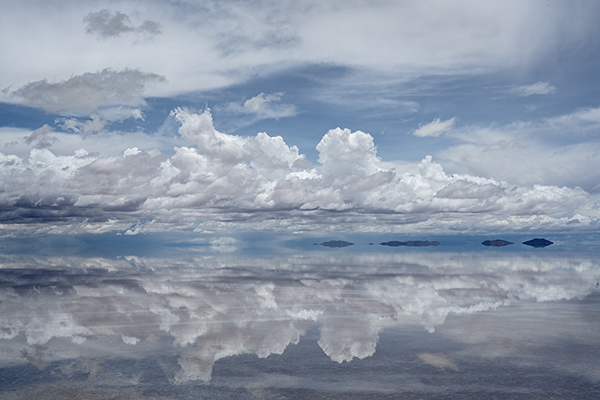
Tamron 28-75mm Di III RXD, 1/200 Sec, f/22, ISO 100 @ 44mm
Click image to view larger
Any time of year this area is an unworldly place to visit and photograph, every direction you face are new cloud formations, different colors and different lighting. During the rainy season which runs approximately from December through April, it becomes an even more extraordinary visual experience. During this time of year, the salt flats are covered in a thin layer of water creating reflections that seem to go on forever. Besides the water the typography itself lends to the almost optical illusion of the reflections. The salt flats are incredibly flat, there is basically no elevation gain (about 1 ft) across the entire 4,000 square foot area. The combination of the water and perfectly flat surface creates a reflection that makes it look like you are walking in the sky and clouds.

Tamron 28-75mm Di III RXD, 1/320 Sec, f/22, ISO 100 @ 75mm
Click image to view larger
If you decide to go during the rainy season, be prepared for thunderstorms at any point during the day, you may even have multiple storms coming in from different directions at one time. These storms may seem at first to be a hinderance for your photography, but they will end up being an added bonus for your photos, making them incredibly dramatic. Also, be aware of the wind as these storms approach. As the storms come and go the wind can pick up and create ripples in the water diluting the reflections. So, keep looking for the calmest water and the cleanest reflections.
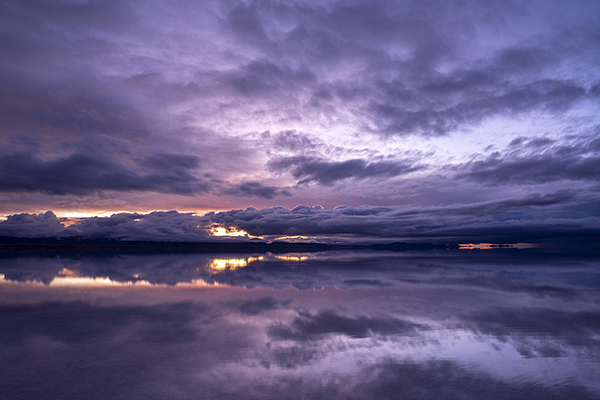
Tamron 28-75mm Di III RXD, 1/15 Sec, f/9, ISO 400 @ 28mm
Click image to view larger
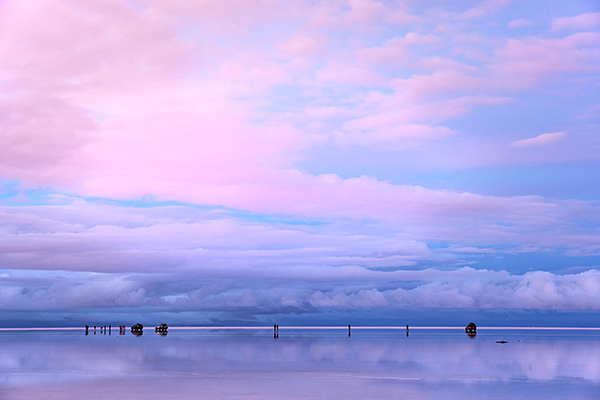
Tamron 28-75mm Di III RXD, 1/25 Sec, f/9, ISO 400 @ 75mm
Click image to view larger
Morning, afternoon or the middle of the day the reflections and scenery will do nothing but astound you, but sunrise is truly something just a little more special. You drive onto the salt flats in the complete darkness without any sound except for the tires slowly rotating over the thin layer of water and a thick crust of salt. When you find the perfect place to stop the sun is just starting to create a soft glow over the eastern peaks and the sky is starting to turn pink and purple. The reflections start coming back and what you thought couldn’t be any more surreal and beautiful just become even more amazing. To the east you have purples and pinks and to the west you have pinks and blues melding together as the sun still under the horizon lightens the sky. At this point you are not perfectly alone but the people and cars far off on the horizon give you some sense of scale. Truly and amazing experience.
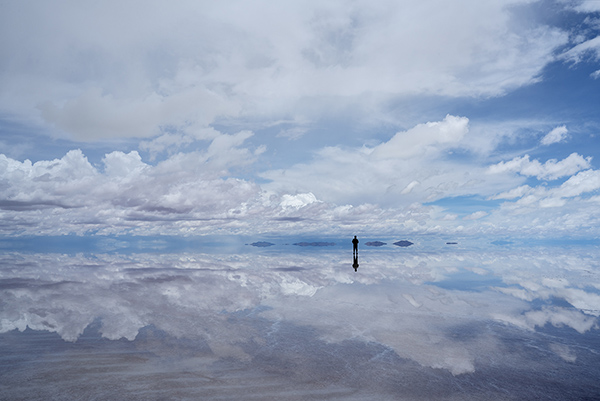
Tamron 28-75mm Di III RXD, 1/160 Sec, f/22, ISO 100 @ 31mm
Click image to view larger
There are a number of ways to get to Salar de Uyuni. Many people take tours out of Chile which brings them onto the flats and then onto the volcano and geyser regions as well. You can also fly into the city of La Paz and then take a bus or plane ride down into the town of Uyuni. In my case we flew into La Paz and then flew into Uyuni and stayed in Uyuni the first night at a great little hotel called Hotel Jardines de Uyuni complete with its own fantastic restaurant (https://www.jardinesdeuyuni.com). On the first day we spent on the salt flats we ended up staying at the salt hotel just off the flats called Palacio De Sal, which is made from salt blocks and has salt floors with wood plank walkways. Another great experience with great rooms and restaurant (https://www.palaciodesal.com.bo/en/). When touring the flats I highly recommend taking a tour, both for knowledge of the flats and for safety, they will also provide a full picnic lunch on the flats with both wine and beer as well. Bolivia sounds like it can be a trip that costs a fortune, luckily it is still a place you can go to at an incredibly great rate, as long as you are willing to take a long plane ride to get there.
Tamron Lens Used
28-75mm Di III RXD for Sony Full-Frame Mirrorless
More Photo Tips | Watch Videos | Learn More About Tamron Lenses | Photo Gallery